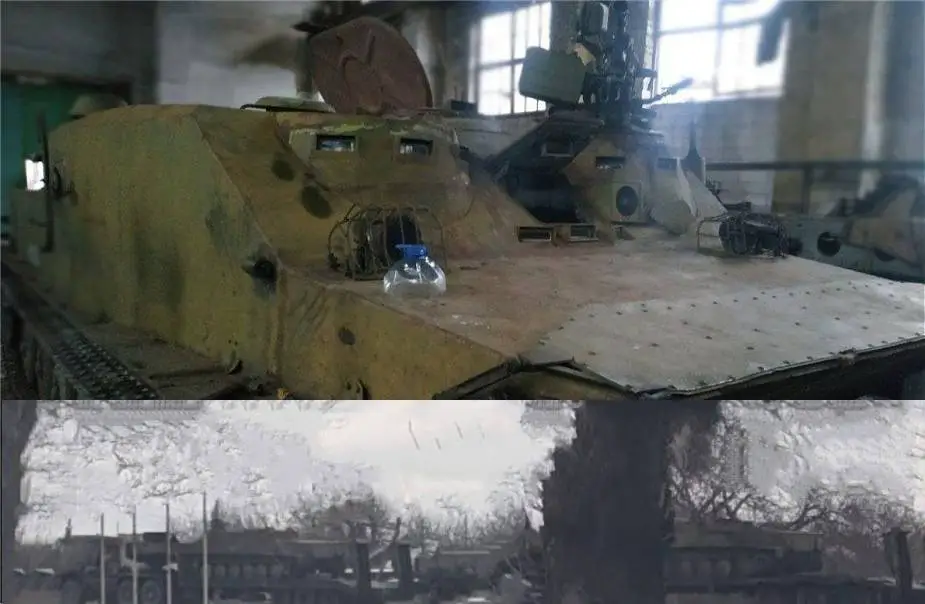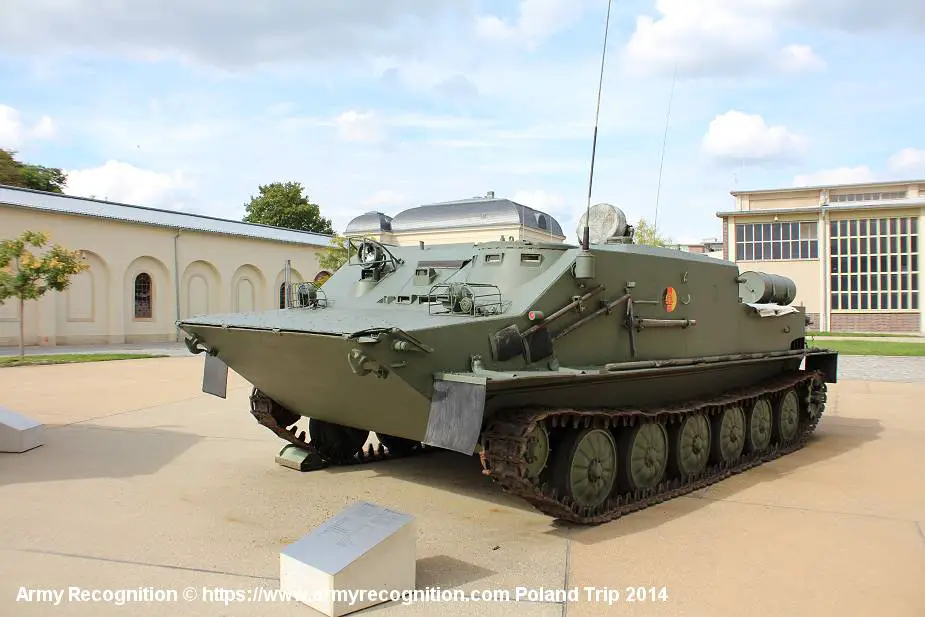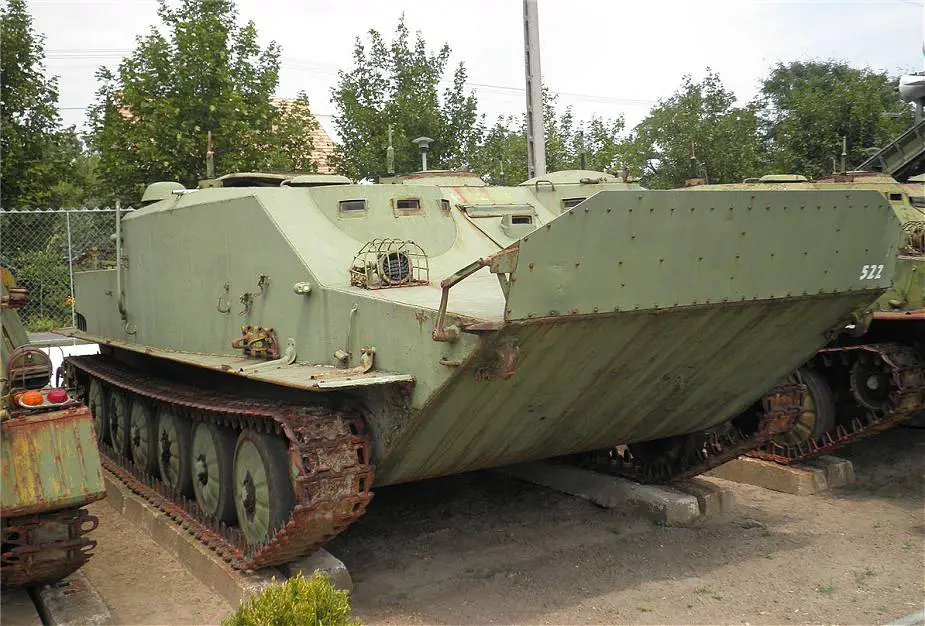- Army
- Conflicts in the world
- Israel - Iran conflict 2025
- Pakistan - India Conflict 2025
- Russia Ukraine War 2022
- Libya conflict day by day
- HAMAS - Israel War 2023
- Operation Serval in Mali French Army
- Sangaris operation Central African Republic
- Sangaris opération militaire République Centreafrique
- Ukraine - Russia conflict
- Syria conflict news
- Defence & Security Industry Technology
- Armies in the world
- Analysis Defense and Security Industry
- Conflicts in the world
- Navy
- Air
Old tracked armored vehicle BTR-50 resumes service in Ukraine with Russian army
According to a video published on the Russian Social Network VK on March 12, 2023, after the ZSU-23-4, Russia also sends in Ukraine the BTR-50PU, another tracked armored vehicle dating from the Cold War to compensate for the heavy losses of combat vehicles in the fighting in Ukraine
Follow Army Recognition on Google News at this link

Russia takes out of its military stocks of old BTR-50 tracked armored vehicles dating from the Cold War for deployment in Ukraine. (Picture source Russian Social Network VK)
According to open-source information, the Russian armed forces lost more than 9,600 combat vehicles, including tanks and armored vehicles that were destroyed, damaged, abandoned, or captured. Due to these losses, Russia was forced to open its stocks of old military equipment, including tanks and armored vehicles dating from the 1960s.
The BTR-50 is a Soviet-era amphibious armored personnel carrier that was first introduced in the late 1950s. It was designed to transport infantry troops and equipment across water obstacles, as well as to provide fire support during combat operations. The first version of the vehicle, the BTR-50P was designed with an open troop compartment while the BTR-50PK was fitted with a fully enclosed troop compartment.
The BTR-50 APC has a crew of three and can carry up to 14 fully equipped troops. It is armed with a 7.62 mm machine gun mounted on a rotating turret, and has an additional 7.62 mm machine gun mounted on the roof. It is also equipped with smoke grenade launchers for concealment.
The BTR-50 APC has an amphibious capability and can move through water at a speed of 8 km/h (5 mph) using its water-jet propulsion system. It is motorized with a 6-cylinder diesel engine that provides a maximum speed of 80 km/h on land.
The BTR-50 is fully amphibious and the vehicle is propelled in the water by a water-jet propulsion system that is powered by its engine, allowing it to reach a speed of up to 8 km/h in the water. The BTR-50 can enter the water without any preparation, and its buoyancy is provided by the vehicle's shape and sealed compartments.
The BTR-50's amphibious capability makes it useful for crossing rivers and other bodies of water during military operations. It allows infantry troops and equipment to quickly and safely cross water obstacles, providing a strategic advantage in certain combat situations.
 The BTR-50 is a tracked amphibious armored vehicle used by the Soviet Union and other countries during the Cold War.
The BTR-50 is a tracked amphibious armored vehicle used by the Soviet Union and other countries during the Cold War.
The BTR-50PU is a command variant of the BTR-50 armored personnel carrier, which was developed in the Soviet Union in the 1960s. The "PU" in its name stands for "Punkt Upravleniya," which means "command point" in Russian.
The BTR-50PU was designed to serve as a mobile command post and communications center for military operations. It has a crew of six and can accommodate up to five staff officers, along with their communication and command equipment.
The BTR-50PU is equipped with a powerful radio system, map boards, and other communication and navigation equipment necessary for commanding troops during operations. It also has a telescopic mast for better communication reception and transmission.
The BTR-50PU is armed with a 7.62 mm machine gun for self-defense. However, its primary role is not combat, but rather as a mobile command center for coordinating and directing military operations.

The BTR-50PU is a variant in the BTR-50 family that was designed as a command and control vehicle, equipped with additional communications and navigation equipment to coordinate battlefield operations.


























